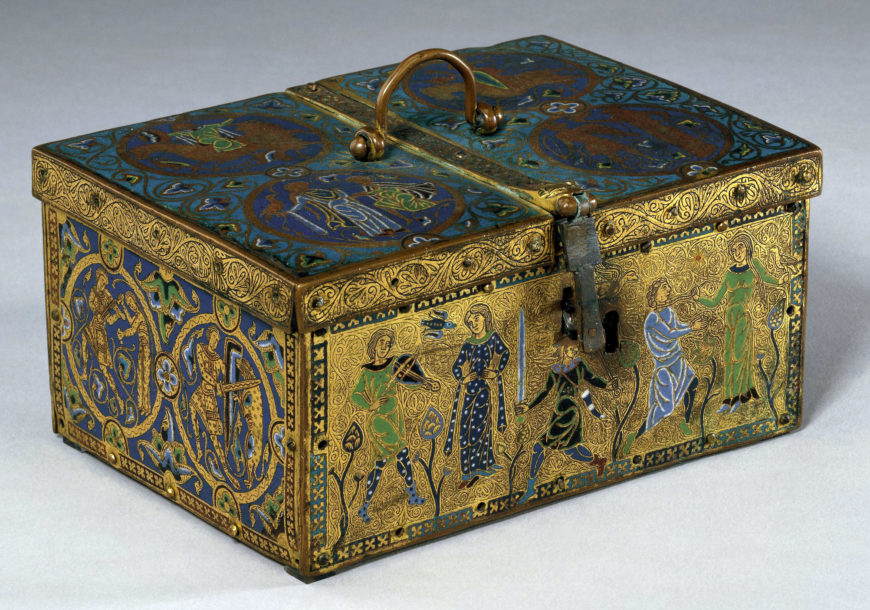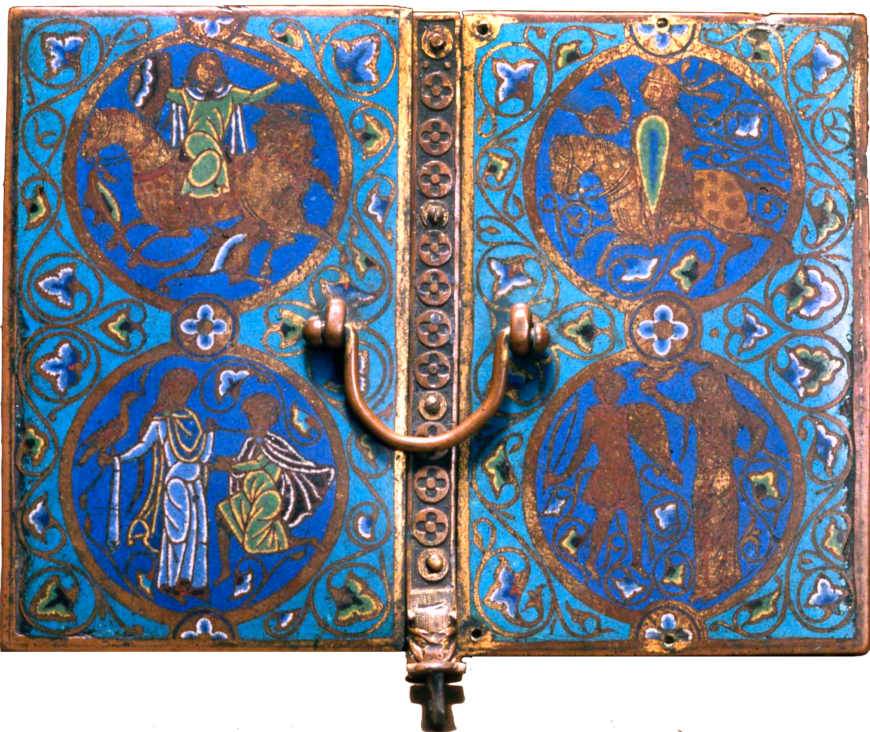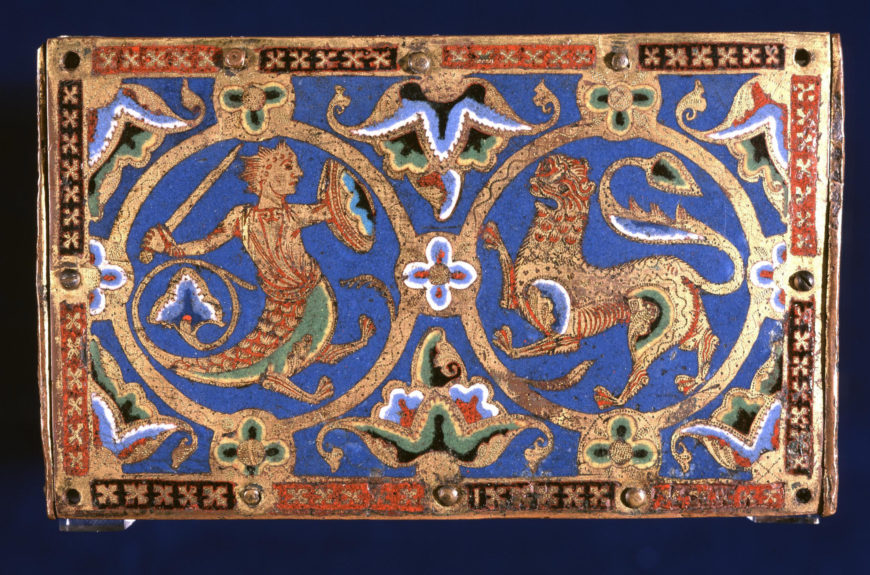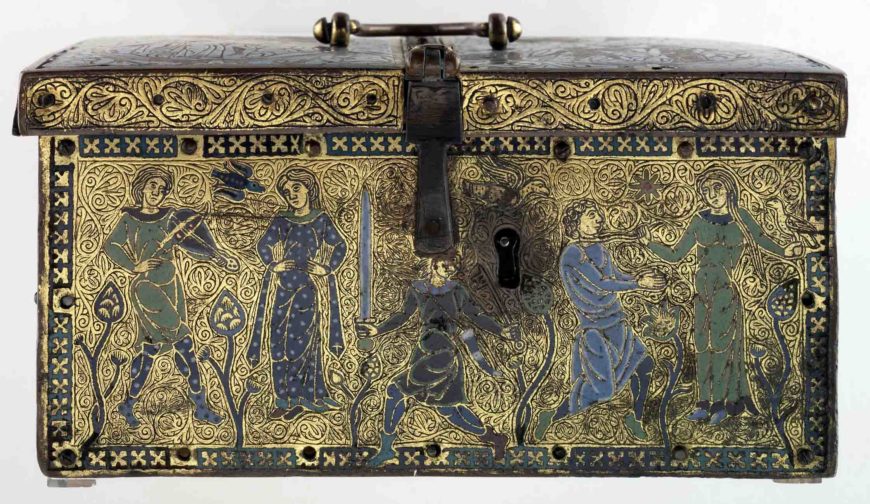
Casket with troubadours, 1180, copper, enamel, gold, from the court of Aquitaine Limoges, France, 21.7 x 11.6 x 16.5 cm (© The Trustees of the British Museum)
This is one of the earliest Limoges caskets made for secular use (that is, not related to the church). It is decorated with lively scenes of combat, music, dance and love.

Detail of the lid, Casket with troubadours, 1180, copper, enamel, gold, from the court of Aquitaine Limoges, France, 21.7 x 11.6 x 16.5 cm (© The Trustees of the British Museum)
On the lid, these themes are contained within four roundels—a man on horseback is attacked by a lion (top left); a lover kneels before his lady (bottom left); a knight on horseback rides into battle (top right); a minstrel plays to a lady who holds a bird (bottom right). These images are developed on three of the four sides of the body of the casket.

Detail of the side with a lion and mythical beast, Casket with troubadours, 1180, copper, enamel, gold, from the court of Aquitaine Limoges, France, 21.7 x 11.6 x 16.5 cm (© The Trustees of the British Museum)
On the left side a dancer and a musician are placed alongside a combatant with a lion, while on the right side a lion and a mythical beast resembling a siren are set in opposition. The back panel is decorated with geometric and floral designs.

Front of the Casket with troubadours, 1180, copper, enamel, gold, from the court of Aquitaine Limoges, France, 21.7 x 11.6 x 16.5 cm (© The Trustees of the British Museum)
On the front of the casket two pairs of lovers display different aspects of the medieval rite of love. Birds fly around them as a minstrel plays a stringed instrument and his lady dances; a lover bends to kneel before his lady. She holds him with a halter around his neck with one hand, while with the other she holds a bird. The lover pays homage to his lady as he adopts the pose traditionally taken by a vassal before his lord. Much of the significance of these scenes is lost to a modern-day observer. The pairs of lovers are separated by a centrally placed figure, poised beneath the lock, holding a sword in one hand and a key in the other. What does this figure represent? Is he defending the contents of the casket? Or does he represent the principal theme of strength in combat versus strength in love?
© The Trustees of the British Museum

